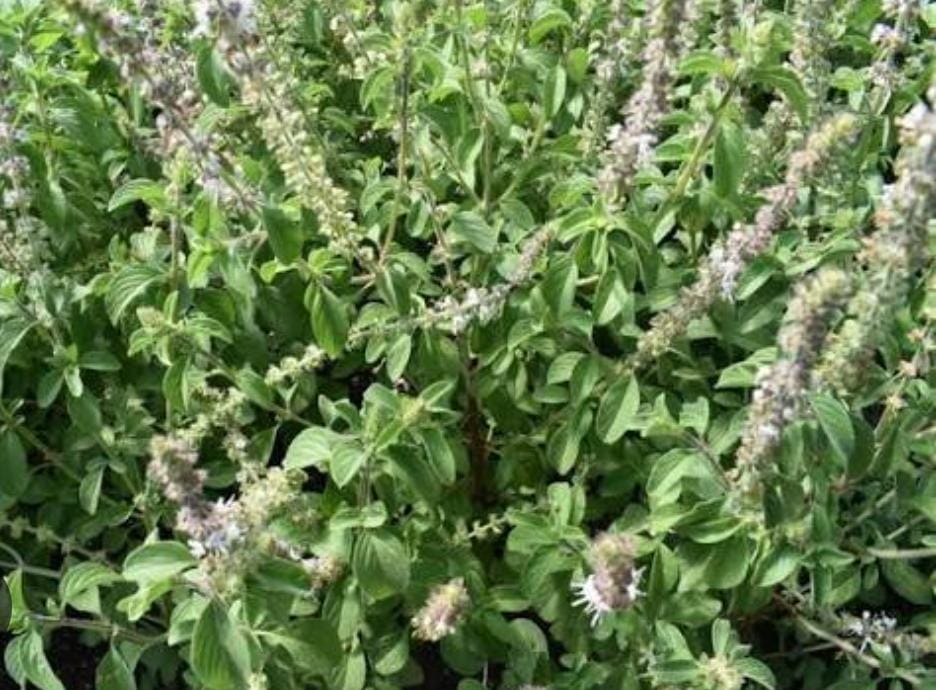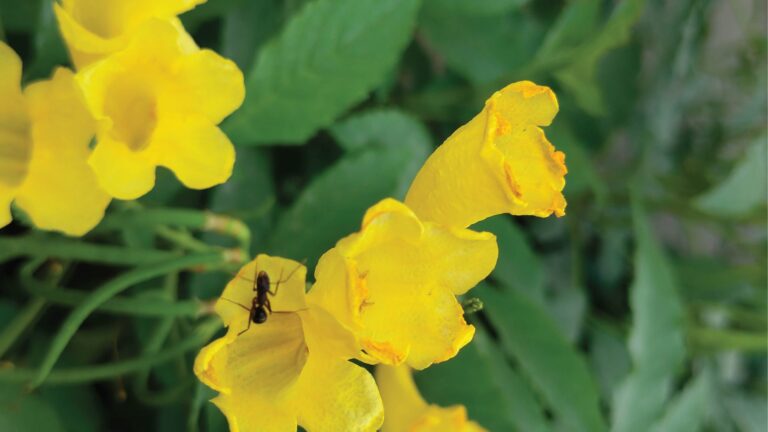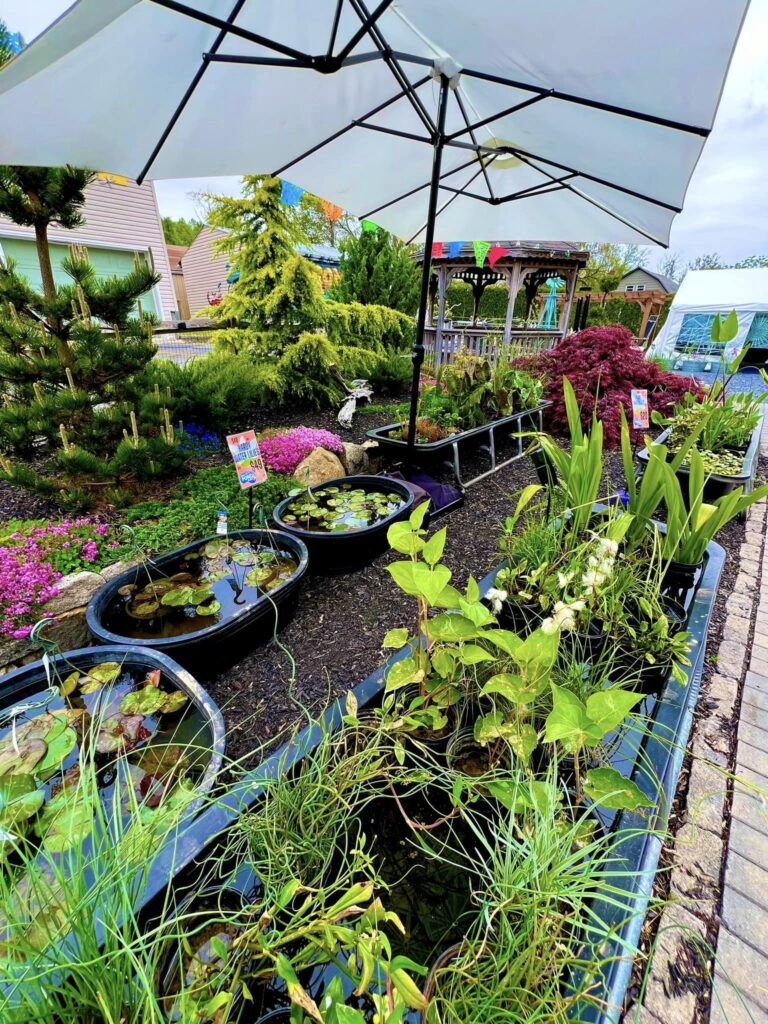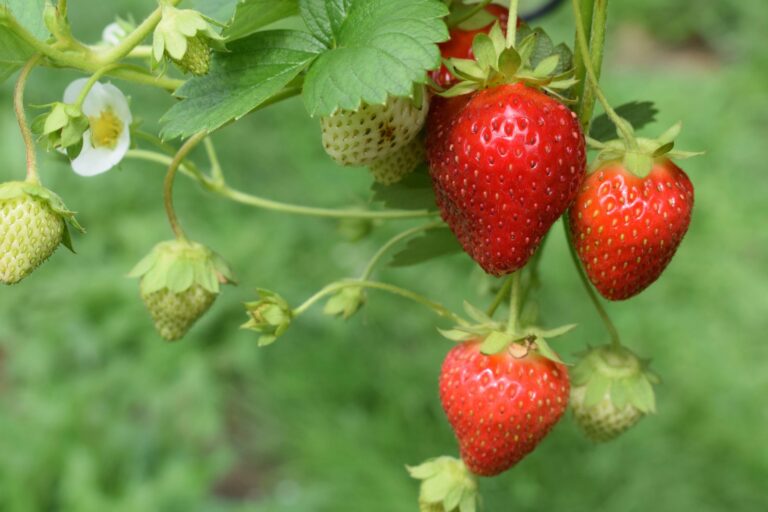Camphor Basil: 5 Magnificent Pharmacological Insights
Introduction
Among the many basil types, camphor basil (Ocimum kilimandscharicum) is notable for its distinct chemistry, cultural value, and diverse applications. We discussed earlier in our blogs that basil is a plant that has captivated humanity for generations, valued not only for its culinary value but also for its medicinal and aromatic properties. This aromatic perennial, native to the slopes of Mount Kilimanjaro in East Africa, has carved out a niche for itself in traditional medicine, industrial applications, and contemporary botanical research.
In this blog, we will look into camphor basil in depth—its botany, phytochemistry, therapeutic benefits, ecological significance, and future potential—in a way that combines science and curiosity, encouraging readers to appreciate this unique plant.
Botanical Background
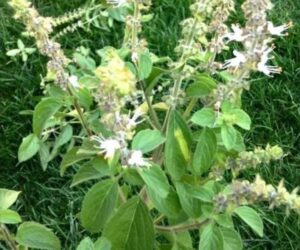
Camphor basil belongs to the Lamiaceae family, which also contains mint, rosemary, sage, and oregano. The plant is a perennial shrub that grows to a height of 4 to 6 feet (1.5 to 2 meters). Its broad, serrated leaves provide a strong, unmistakable camphor-like perfume when crushed, thanks to volatile oils contained in specialized glandular trichomes.
It produces little, pale violet to white flowers on spikes that attract bees and other pollinators. The plant thrives in warm, subtropical, and tropical climates and can tolerate relatively poor soils, making it both tough and adaptable. Its hardiness has allowed it to spread beyond its natural region, to Pakistan and other parts of Asia, where it is now grown both traditionally and commercially.
The Chemistry Behind the Aroma
What distinguishes camphor basil is its high camphor concentration, which can account for 60-80% of the essential oil composition. Camphor is a bicyclic monoterpenoid ketone with a potent scent and numerous therapeutic applications.
Other compounds identified in camphor basil oil are:
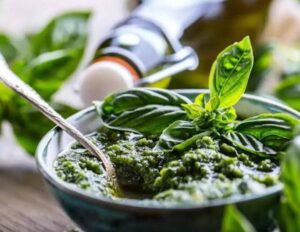
- 1,8-cineole (eucalyptol) – helps with respiratory comfort and antibacterial action
- α-Terpineol has antioxidant and antibacterial effects
- Linalool adds a floral scent and has relaxing properties
- β-caryophyllene is a sesquiterpene renowned for its anti-inflammatory properties
This chemical combination makes camphor basil oil valuable in the pharmacological, cosmetic, and industrial sectors. Unlike sweet basil (Ocimum basilicum), which has culinary applications, camphor basil is not as good for the kitchen but extremely useful in health and wellness.
Traditional Medicine and Ethnobotanical Uses
For ages, local tribes in East Africa and Southeast Asia have used camphor basil as a home treatment. Its applications range from respiratory therapy to skin problems, demonstrating its extensive pharmacological effects.
Respiratory Relief: Leaf infusions or steam inhalations are used to treat coughs, colds, bronchitis, and asthma. The high levels of camphor and cineole function as decongestants and bronchodilators.
Malaria Prevention: Some societies burn dried leaves to discourage mosquitos, hence lowering malaria risk.
Digestive Aid: Decoctions are used to treat stomach aches, indigestion, and gas.
Crushed leaves or oil infusions are used to treat wounds, bug bites, and fungal infections because of their antibacterial properties.
Spiritual and Ritualistic Value: The aromatic smoke from burning camphor basil leaves has long been utilized in cleaning rituals and as an offering in religious ceremonies.
These traditional practices sparked modern scientific research, many of which validated the therapeutic efficacy of camphor basil.
Pharmacological Insights
Recent studies have revealed that camphor basil’s essential oil and extracts hold promise in several therapeutic domains.
1. Antimicrobial Activity
Camphor basil oil has been found in laboratory experiments to efficiently prevent the growth of bacteria such as Staphylococcus aureus and Escherichia coli, as well as fungi like Candida albicans. This is consistent with its traditional usage in the treatment of skin diseases and wounds.
2. Antioxidant Effects
The plant’s phenolic chemicals and terpenoids scavenge free radicals, lowering oxidative stress, which has been related to chronic illnesses like cardiovascular disease and cancer.
3. Anti-inflammatory Potential
Camphor basil extracts have been shown in animal experiments to lower inflammatory markers, implying that they may be useful for treating arthritis, joint pain, and inflammatory skin disorders.
4. Insecticidal and Repellent Qualities
Camphor basil is a natural repellent for mosquitoes, ticks, and agricultural pests. This has sparked interest in producing eco-friendly repellents and biopesticides based on its essential oil.
5. Respiratory Therapeutics
The inhalation of camphor-rich vapors clears nasal passages, improves airflow, and relieves congestion. These qualities make it an excellent choice for use in herbal cold and flu remedies.
Camphor Basil in Modern Industry
This plant’s high camphor concentration makes it a viable alternative to synthetic camphor, which is frequently generated from petroleum sources. Its applications range from:
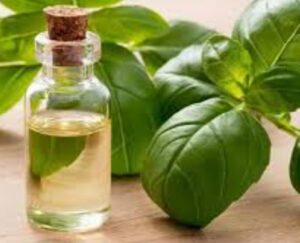
- Balms, ointments, chest massages, and cough syrups are all examples of applications in the pharmaceutical industry
- Aromatherapy: Diffused oils help with tension, anxiety, and mental weariness
- Cosmetics: Added to creams, soaps, and lotions for antibacterial and rejuvenating properties
- Agriculture: acts as a natural insecticide, minimizing the need for artificial formulations
- Household Products: Added to moth repellents, room fresheners, and cleaning products.
This adaptability exemplifies how camphor basil combines old wisdom and modern innovation.
Cultivation and Agronomy
Camphor basil cultivation is quite simple, making it an appealing crop for both small farmers and huge farms alike.
1. Climate Requirements
This plant thrives in warm temperatures and requires a frost-free environment to flourish. It enjoys direct exposure to sunlight, which is essential for its growth and overall health. Ideally, it should be placed in a location where it can soak up sunlight for several hours a day, ensuring it receives the warmth and light necessary for optimal development.
2. Soil Conditions
This plant thrives in sandy loam soils, which provide excellent drainage and aeration. However, it is remarkably resilient and can endure conditions in nutrient-poor soils, showcasing its hardiness and adaptability to various environmental challenges. This ability allows it to establish and grow even when essential nutrients are limited, making it a reliable option for less fertile areas.
3. Propagation

Both stem cuttings and seeds are effective methods for propagating plants, but they each have their distinct advantages. Using stem cuttings typically leads to a quicker establishment of new plants, as this method allows for the rapid development of roots from a portion of the parent plant. In contrast, starting from seeds can be a slower process, requiring time for germination and subsequent growth before the plants reach maturity. Depending on the specific plant species and the desired timeline for growth, the choice between cuttings and seeds can significantly influence the success and speed of propagation.
4. Harvesting
The leaves can be harvested multiple times throughout the year, allowing for a consistent supply of fresh material. The essential oil is then extracted through a process known as steam distillation, where steam is passed through the plant material to separate the oil from the leaves. This method ensures that the delicate aromatic compounds are preserved, resulting in a high-quality essential oil.
5. Yield
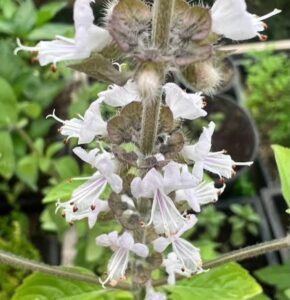
A well-established plantation has the potential to yield a substantial quantity of oil, which can significantly bolster local economies and enhance prospects for exporting goods. The large-scale production not only creates jobs for residents but also stimulates related industries, such as processing and transportation. This influx of economic activity can lead to improved infrastructure, increased investment in the region, and greater overall prosperity for the community. Additionally, the export of oil can open up new markets for local producers, driving up demand and potentially increasing profits for farmers and businesses involved in the supply chain.
Its low care requirements and high-value oil make it an appealing crop for regions wishing to diversify agricultural production.
Ecological Role
Camphor basil has ecological benefits in addition to its human applications. Its flowers attract pollinators like as bees and butterflies, which promotes biodiversity. Its fragrant chemicals repel herbivores and pests, making it an ideal garden companion plant.
Interestingly, the plant’s powerful aroma helps to hide the scent of nearby crops, reducing pest infestation. This trait emphasizes its potential integration into sustainable agricultural systems.
Camphor Basil and Human Wellness
This basil has established itself as a link between the body and the mind in holistic wellbeing. Inhaling its perfume stimulates the limbic system, a portion of the brain responsible for emotions and memory. This can assist in reducing stress, improving concentration, and elevating mood.
Massage oils packed with camphor basil improve circulation and relieve muscle tightness. Its cold feeling is soothing and invigorating, making it a popular choice in herbal spas and wellness centers.
Challenges and Considerations
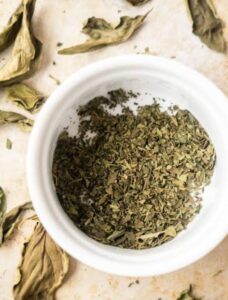
Despite its numerous advantages, like other herbs we discussed in our previous blogs, cultivation of this basil also has a lot of challenges:
- Toxicity Risks: Excessive consumption of camphor oil can result in nausea, convulsions, and liver damage. As a result, proper dosage and professional supervision are required
- Market Awareness: Camphor basil is less known globally than sweet basil, limiting commercial demand
- Overharvesting: If demand develops without sustainable procedures in place, wild populations may be jeopardized
Balancing these challenges necessitates education, laws, and cultivation practices that encourage safe and ethical use.
Future Prospects
Research on camphor basil is expanding, with intriguing possibilities including:
- Phytopharmaceuticals: Standardized extracts could be used in modern herbal therapy to treat respiratory and inflammatory problems
- Biopesticides: Environmentally friendly insect repellents developed from camphor basil are being studied for agricultural use
- Essential Oil Markets: As global awareness in natural products grows, camphor basil oil may see increased demand in the aromatherapy and personal care industries
- Climate Adaptation Crop: Due to its resilience, it has the potential to be a cash crop in areas experiencing climate stress.
The future of this wonderful herb is at the crossroads of science, tradition, and sustainability.
Conclusion
Camphor basil is more than just a fragrant bush. It represents a synthesis of chemistry, culture, and caring that extends from African customs to modern laboratories. With its abundant essential oils, extensive therapeutic benefits, ecological significance, and industrial potential, this plant provides numerous prospects.
By acknowledging both its advantages and disadvantages, cultures can use camphor basil not only for health and trade, but also as a symbol of ecological existence. Its journey from traditional medicine to scientific validation exemplifies the everlasting knowledge buried in nature and waiting to be revealed.
Camphor basil stands out as a herb worth understanding, growing, and safeguarding in an era when people are looking for holistic, eco-friendly, and science-backed answers.

